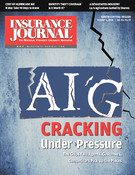Trigger — what determines which policy applies. Most liability policies require property damage caused by an occurrence and require that the property damage occur during the policy period. The question, in Texas and elsewhere, has been what does it mean for damage to “occur,” or what triggers coverage.
The Texas Supreme Court has finally adopted a trigger for property damage claims under liability policies. In Don’s Building Supply, Inc., v. OneBeacon Insurance Company (No. 07-0639 Tex. Sup. Ct.), issued August 29, 2008, the Court announced that an injury-in-fact trigger would apply.
The case was presented on certified questions from the Fifth Circuit. The issue, as paraphrased by the Supreme Court, was “is an insurer’s duty to defend triggered where damage is alleged to have occurred during the policy period but was inherently undiscoverable until after the policy period expired?” The answer was “yes”: “the key date is when injury happens, not when someone happens upon it.”
The Underlying Claim
The underlying claim arose from allegedly defective EIFS siding systems sold and distributed by the insured. The homeowner claimants alleged that the EIFS was defective and allowed moisture to seep into cavities behind the siding, leading to wood rot and other damage. They asserted that the damage began upon the first penetration of moisture, during the policy period, although they also asserted the discovery rule, contending the damage was undiscoverable until some time after the policy period.
The Court concluded that a literal reading of the policy required an injury-in-fact trigger, and that the date of discovery was irrelevant. Conversely, the Court found no policy language supporting a manifestation or exposure trigger. The Court noted, “The policy asks when damage happened, not whether it was manifest, patent, visible, apparent, obvious, perceptible, discovered, discoverable, capable of detection, or anything similar” and concluded, “Occurred means when damage occurred, not when discovery occurred.”
A Long-Standing Issue
The opinion resolves a long-standing issue. While most courts of appeal had presumed a manifestation trigger — holding property damage occurred when it became discoverable — other courts, most notably the Houston Courts of Appeal, had applied an exposure trigger, finding that any policy in effect during the period of exposure to the damaging condition were implicated.
The Supreme Court acknowledged the unresolved issue in 1994, in American Physicians Insurance Exchange v. Garcia [876 S.W.2d 842 (Tex. 1994)]. In Garcia, the Court seemed to reference the manifestation cases with approval, but resolved the case on other grounds and did not squarely address the trigger issue.
One of the problems with injury-in-fact is that it may require significant proof to establish when a latent or progressive injury “in fact” occurred. The secondary coverage litigation becomes fact intensive, with competing expert testimony. The Court acknowledges this dilemma — stating that “pinpointing the moment of injury retrospectively is sometimes difficult, but we cannot exalt ease of proof or administrative convenience over faithfulness to the policy language” — but concludes the problem stems from the policy language and invites insurers to seek approval for specific manifestation-based insuring language. Id. (“If the manifestation rule offers advantages of ease of application or proof for the insurer or insured, insurance companies might consider adopting policies where coverage depends on manifestation of damage, and seeking approval of such policies by Texas insurance regulators.”)
The Court also predicts, however, that its rule will be easier to apply for many claims.
Liability Only
The opinion addresses only liability claims and not first party claims for property damage. The opinion also does not address bodily injury claims.
While many injuries are immediate, and trigger the policy in effect at the time of the accident and injury, toxic tort cases have long been a subject of dispute, with courts across the country adopting different triggers to try to address the unusual circumstances of long-term exposure and microscopic damage leading to subsequent diagnosable disease. While some Texas courts have presumed an exposure theory for these claims, the issue remains open and the opinion in Don’s Building does not provide a definitive response. The Court does note, however, that “… while we believe an injury-in-fact trigger is the only theory of coverage consistent with the policies’ plain wording, at minimum it cannot be argued that the policies unequivocally dictate another trigger, and under Texas law terms that are susceptible to multiple reasonable interpretations must be construed in the policyholder’s favor.” (See Don’s Building at n. 46.)
Accordingly, there is the possibility that bodily injury claims will also be subject to an injury-in-fact analysis, or that policyholders can argue the language is ambiguous, and the most beneficial trigger to a particular set of circumstances applies.
Following the same reasoning, it is still possible that a different trigger could apply to other forms of progressive property damage, if the court really means the language is ambiguous, and not that it is subject to an injury-in-fact trigger. The Court noted, at another point, that what some courts call an “exposure rule” other courts call “injury-in-fact,” at least suggesting that multiple policies could still be responsible.
The Court also sheds little light on the problem of claims that may span several policy periods, and whether, or under what circumstances, an injury-in-fact trigger can result in multiple years of coverage. As the case before it involved three years with the same insurer, the Court notes that this analysis is not required. It does cite its own opinion in Garcia, holding that “If a single occurrence triggers more than one policy … all insurers whose policies are triggered must allocate funding of the indemnity limit among themselves according to their subrogation rights.” [Don’s Building, at n. 45, quoting American Physician’s Exch. v. Garcia (876 S.W.2d at 855).]
Not only does the reference to Garcia — which involved medical malpractice — not resolve the issue of which carriers owe, and how much, the suggestion that carriers can pay and subrogate is made without any reference to the Texas Supreme Court’s Nov. 2007 opinion in Mid-Continent Insurance Company v. Liberty Mutual Insurance Company [236 S.W.3d 765(Tex. 2007)] when it held co-insurers had no subrogation rights against one another.
So, as is often the case, one question is answered but it begets many others. And, the footnotes hold clues and tantalizing suggestions, but only the future — and much more litigation — can provide the details of how the adoption of a trigger will truly affect Texas insureds and insurers.
Was this article valuable?
Here are more articles you may enjoy.


 Cyber Insurance Market ‘Stable’ With Potential for Growth, Says AM Best
Cyber Insurance Market ‘Stable’ With Potential for Growth, Says AM Best  Three Charged With Helping Agents Cheat on Florida Insurance License Exams
Three Charged With Helping Agents Cheat on Florida Insurance License Exams  US Judge Skeptical of Biden Overtime Pay Rule
US Judge Skeptical of Biden Overtime Pay Rule  Let Good Adjusters, Not Expensive Lawyers, Make the Difference on Claims, CEO Says
Let Good Adjusters, Not Expensive Lawyers, Make the Difference on Claims, CEO Says 


